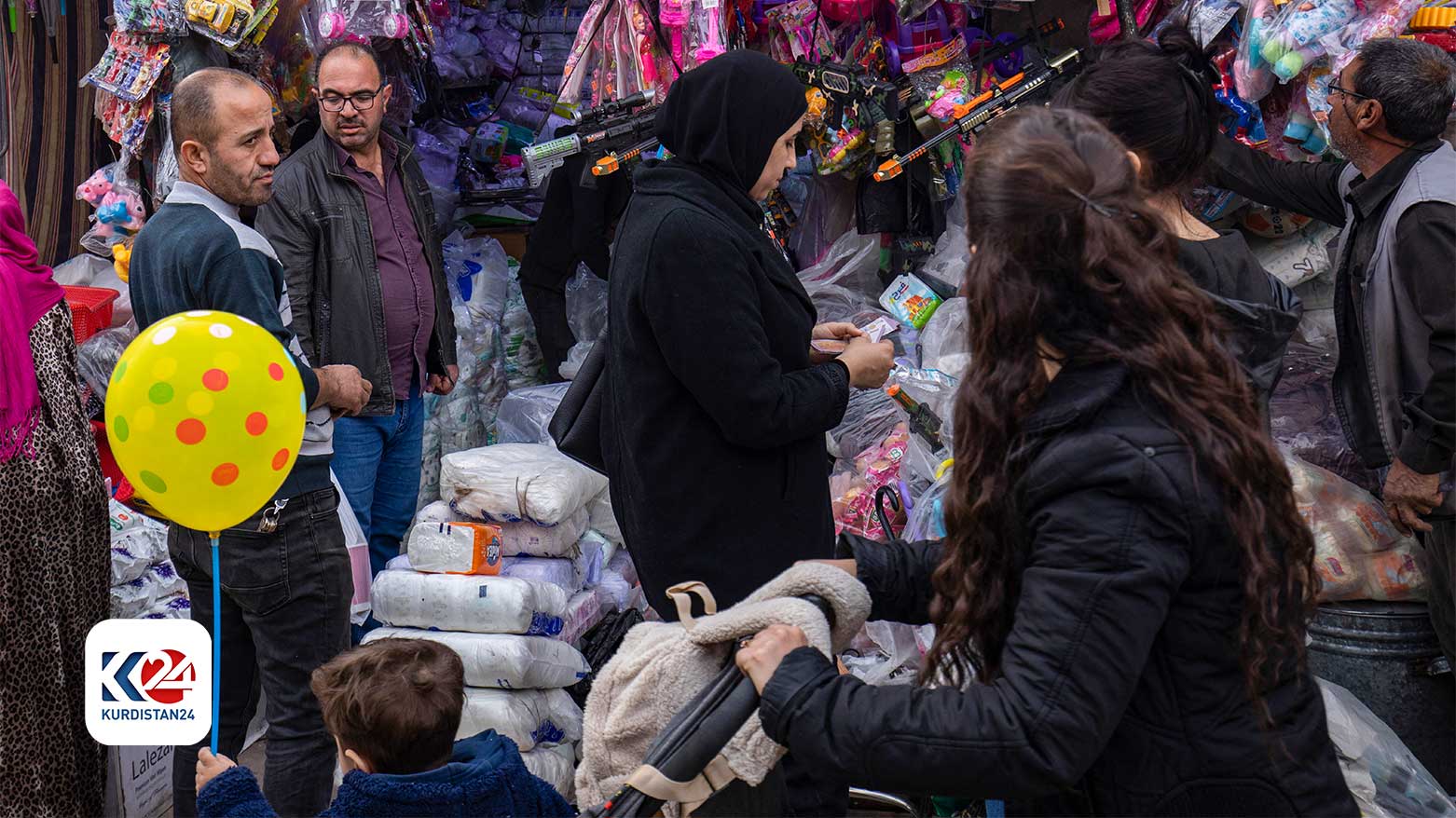New dawn or continued struggle? Kurds in post-Assad Syria
Long-oppressed by the previous regime in Syria, the Kurdish community fears losing the hard-won gains, and in particular, the limited self-rule that they exercise at the moment.

Dec. 13, 2024
ERBIL (Kurdistan24) – Following the collapse of al-Assad’s rule in Syria, spanning half a century, the question that is being asked now is what comes next. This is a question of great importance to the Kurds of Rojava.
As of now, it appears that there is a subtle, and indeed a fragile truce in place between the Kurdish forces led by the Syrian Democratic Forces (SDF – locally known as Hêzên Sûriya Demokratîk) and Syrian Opposition Forces led by the Hayat Tahrir al-Sham (HTS) and its allies.
The former is a US-backed ally, while the latter is a proscribed armed group by the United Nations, the United States, and Turkey. However, some believe that the latter, meaning Turkey, is supporting HTS.
However, the general attitudes towards HTS are changing.
Tedros Adhanom Ghebreyesus told reporters in Geneva, "The appointment in the last few hours of a transitional government in the Syrian Arab Republic is bringing new hope to a country that has suffered so much."
"The reality so far is that the HTS and also the other armed groups have been sending good messages to the Syrian people," UN Special Envoy to Syria Geir Pedersen told reporters in Geneva.
However, the new government in Syria is viewed by international actors, and the Kurds still are concerned with outcomes.
Long-oppressed by the previous regime in Syria, the Kurdish community fears losing the hard-won gains, and in particular, the limited self-rule that they exercise at the moment.
More than half a decade of the Assad dynasty meant discrimination, oppression, and targeting of the Kurds in Syria. Indeed, it could be said that others too felt the brutal rule, but the Kurds were targeted in particular throughout the Assads’ rule in Syria.
Kurdish language was forbidden, and the right of the citizenry was not even considered a right for most of the Kurds.
Now that a new dawn awaits Syria, with the Hayat Tahrir al-Sham in control of Damascus, the Kurdish authorities, the Autonomous Administration of North and East Syria (AANES), have reached out to the new leaders in the capital, recognizing the newly adopted three-starred flag used by the opposition.
A Washington-based Kurdish Affairs Analyst who tracks Kurdish affairs in Syria Multu Civiroglu told Agence France-Presse (AFP) that the fate of Kurdish authorities in Syria “remains uncertain”.
He pointed out the “rapidly shifting dynamics on the ground” as the major factor behind this sentiment.
As Civiroglu added in his interview with AFP, the Kurds in Syria are facing “mounting pressure from the Turkish government and factions under its control.” This became prevalent during the rebels’ offensive campaign which saw clashes between SDF and HTS and its allies.
Mazloum Abdi, head of the US-backed SDF, announced a few days ago that he welcomed “an opportunity to build a new Syria based on democracy and justice that guarantees the rights of all Syrians.”
However, things are easier said than done. There are lingering fears and many are concerned about the fate of the Kurdish semi-autonomous region in Syria.
As the Kurdish residents of Qamishli have revealed to the AFP, the Kurdish public is concerned with the lack of recognition by what they called “factions in Damascus”.
The Kurdish community warned of rebels’ “whitewashing their image in front of the international community”.
It is well-documented that minority groups suffered immensely during the civil war in Syria which lasted 13 grueling years. The matters turned to worse when the Islamic State came into the picture and exacerbated an already horrendous situation in Syria.
Though Syria was deemed to be the epicenter of ISIS, it grew eastward and controlled a swathe of land in Iraq as well, leading the international community to forge an alliance to defeat ISIS barbarity.
The curious bit of history behind Hayat Tahrir al-Sham, which is now in control of Damascus, is that it was rooted in Syria’s branch of al-Qaeda and it is still a proscribed terrorist group by the majority of western countries.
However, as AFP wrote, the group “has sought to moderate its rhetoric.”
Conversely, the background for SDF is more Western-oriented. Emerged as a potent local military response on the ground against the threat of ISIS and backed by the US, the SDF led the fight to defeat ISIS in Syria in 2019.
Backing SDF meant that the US policy was at odds with a NATO ally in Ankara. Ankara’s government counts the SDF as an offshoot of PKK.
In a recent trip to Ankara, while the US Secretary of State Anthony Blinken supported Turkey’s claim against PKK (Kurdistan Worker’s Party - Partiya Karkerên Kurdistanê), he reiterated SDF as a key ally for spearheading an offensive that defeated ISIS.
This has caused division between Washington and Ankara.
In reality, the Turkish-backed groups, who are in control in Damascus, have started to target Kurdish-held territories. It began with Manbij and then Deir Ez Zor.
Despite repeated calls by the new government that religious minorities have nothing to fear, as AFP wrote, they have not made any mention of ethnic minorities such as the Kurds.
Could this be a sign of further internal turmoil among the ethnic groups in Syria?
The Kurds themselves are arguing that they already have a solution for this predicament.
The Qamishli residents told AFP that the best solution for post-Assad Syria is the establishment of a federative state instead of a centralized government.
As the situation unfolds in Syria, a specter of uncertainty looms large. The outcome is yet to reveal itself.
